By Dan Middlemiss, 1 August 2025
The war between Russia and Ukraine has certainly focused attention on the important role robotic systems such as military drones can play in major conflicts. Among the advantages provided by drones, the fact that they are relatively cheap, can be mass produced, and can be deployed in short order against much more complex and expensive traditional military weapon systems as well as against vulnerable military and civilian infrastructure, stand out.
While the debate concerning whether drones are revolutionary game-changers or simply evolutionary enhancements to conventional weapons rages on in the commentariat, there is no denying that state and non-state actors are taking drones very seriously.
However, there is at the same time a danger that drones will succumb to ‘scope creep’ in many forms, much like many traditional weapon systems have experienced in the past. And, to the extent that they do, some of the touted advantages of drones may be eroded as these systems become far more complex and sophisticated and are asked to do more with the result that they risk becoming much more expensive than they are at present. One does not have to look far for evidence of this trend.
Governments near and far are now seeking longer range, more speed, bigger payloads, and stealth for a broader range of operational missions from their drones.[1]
The question for the future is, will the growing demand for more from drones eventually erode the very characteristics that have made them so appealing to date?
Notes
1. A quick scan of recent articles reveals the following examples. Craig Langford, “Britain looking for carrier capable stealth combat drones,” ukdefencejournal.org.uk, 30 July 2025; Akhsan Erido Elezhar, “Germany Taps Industry Giants to Build Its Next Long-Range Strike Drone,” nextgendefense.com, 30 July 2025; Aaron-Matthew Lariosa, “Navy Seeks New Fast Attack Surface Drone Design,” news.usni.org, 28 July 2025; and Akhsan Erido Elezhar, “India Develops First ‘Dual Stealth Drone’ Wrapped in Nanotech Cloak,” nextgendefense.com, 23 July 2025.
Image: 220910-N-NO146-1001 GULF OF AQABA (Sept. 10, 2022) Two unmanned surface vessels, a Devil Ray T-38 and Saildrone Explorer, operate in the Gulf of Aqaba, Sept. 10, during Eager Lion 2022. Eager Lion is an exercise between the U.S., Jordan, and 28 partner nations focused on enhancing military cooperation and interoperability. (U.S. Navy photo)
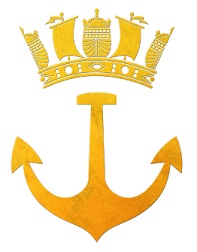
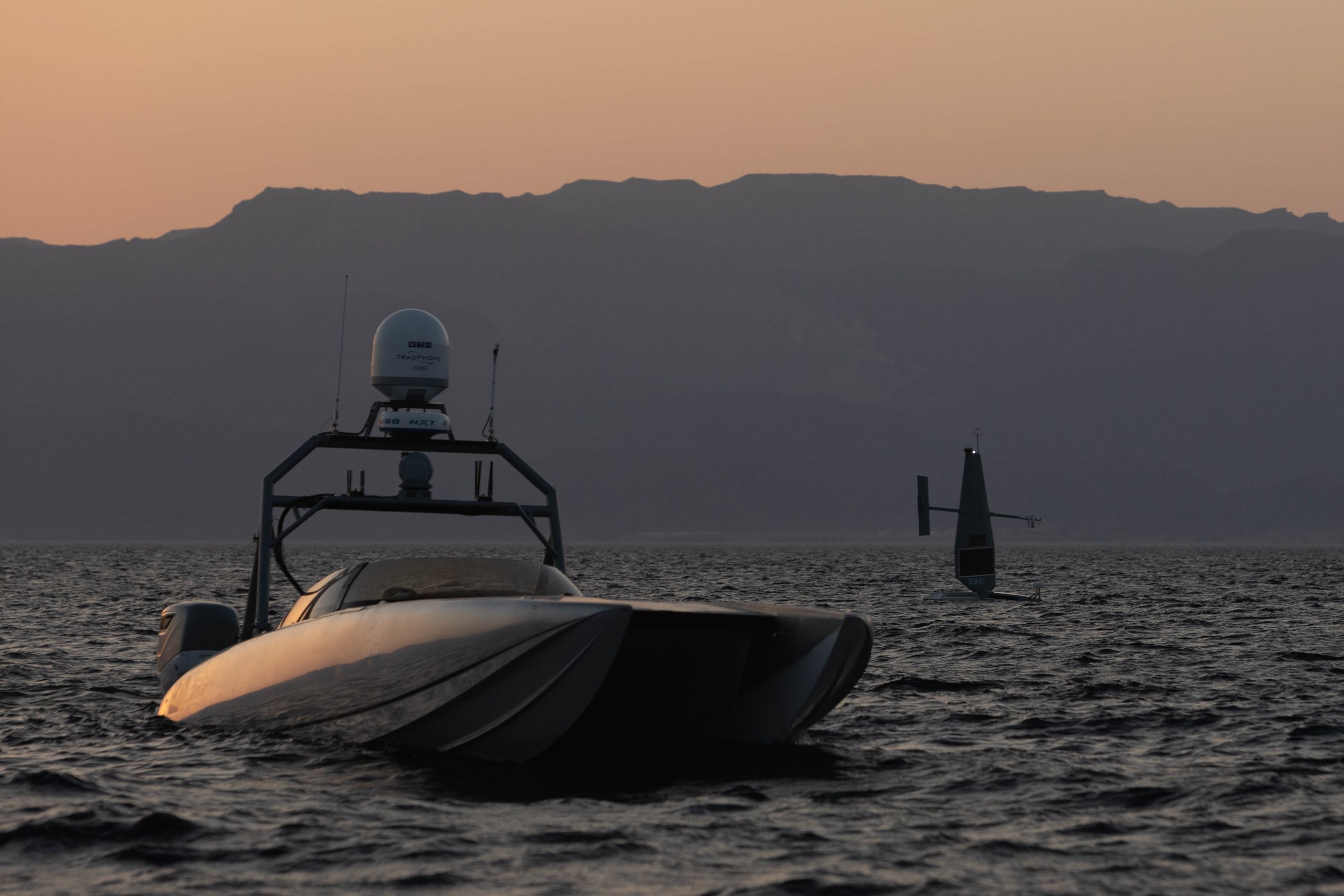
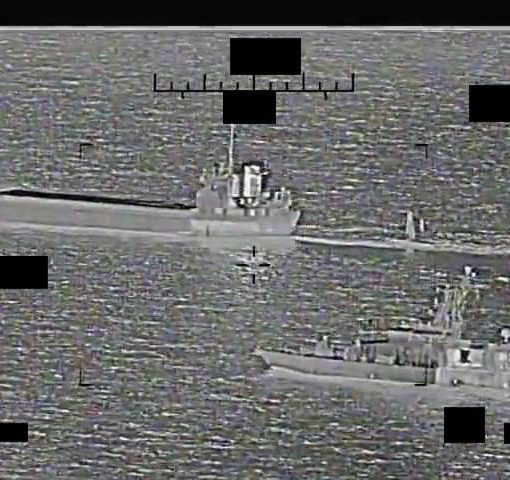

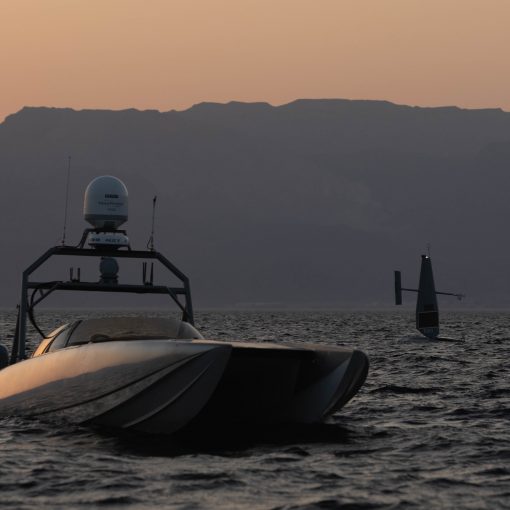
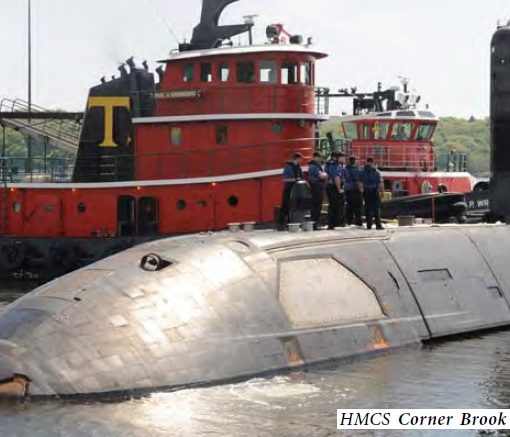
10 thoughts on “The Drone Fadwagon Rolls On”
Dan Middlemiss rightly points out the transformative impact drones have had on modern warfare particularly in Ukraine, where low-cost, rapidly deployable systems have neutralized tanks, supply depots, and even capital ships. However, his concern that drones may lose their advantages as they become more capable misunderstands both the economics of warfare and the modular, scalable nature of unmanned systems.
False Dichotomy: Cheap vs. Capable
Middlemiss implies a binary between cheap, expendable drones and expensive, overengineered ones. But the real world trend is toward tiered drone ecosystems. Modern militaries are not replacing $1,000 quadcopters with $100 million stealth drones; they are deploying both alongside loitering munitions, attritable systems, and optionally manned platforms. Each tier has a role: from massed swarm attacks and ISR (intelligence, surveillance, reconnaissance) to strategic strike missions.
Example: Ukraine’s use of DJI style commercial drones for artillery spotting coexists with advanced drones like the Bayraktar TB2 or sea drones used in Crimea. None renders the others obsolete; each complements the other in a combined arms framework.
Modular Design Counters Cost Inflation
The drone market is not locked into a linear “bigger = better = more expensive” trajectory. Instead, design philosophies emphasize modularity, open architecture, and commercial off-the-shelf (COTS) components. This allows states even small ones to tailor drones to missions without starting from scratch.
Example: Canada’s adoption of the Skydio X2D and future procurement of maritime drones (as recently seen in HMCS Montréal trials) highlights how niche missions can be fulfilled without spiraling cost.
Autonomy Reduces Lifecycle Cost
While more sophisticated drones may have higher unit prices, they can drastically reduce operating costs by eliminating the need for full air or ship crews, extending loiter time, and requiring fewer logistical chains. In many cases, one autonomous or semi autonomous drone replaces the need for several traditional platforms or personnel intensive missions.
“Scope Creep” is Evolution, Not Decay
What Middlemiss frames as “scope creep” is better understood as the natural evolution of any transformative military technology. Tanks, aircraft, and submarines all evolved from cheap, rudimentary platforms into high performance systems. Their growing sophistication didn’t negate their value it expanded it. The same is true for drones.
Yes, advanced drones like the MQ-25 Stingray or India’s stealth drones are more expensive than early quadcopters. But they are still vastly cheaper and lower-risk than manned equivalents, especially in contested environments.
The Threat Landscape Demands It
Adversaries like China and Russia are rapidly developing counter drone technologies, from directed energy weapons to electronic warfare. More capable drones are necessary to ensure survivability and mission effectiveness in future peer or near peer conflicts. Sticking with minimalistic, “cheap” drones may result in unacceptable attrition rates when facing modern integrated air defenses.
Rather than worrying that drones are becoming too complex, policymakers should welcome the evolution of drone capabilities as long as procurement stays agile, layered, and cost conscious. Scope creep is only a risk if militaries forget the foundational logic of drone warfare: asymmetric advantage through adaptability, scalability, and cost efficiency. The smartest actors aren’t choosing between cheap or capable, they’re deploying both.
Ted,
Thank you for injecting of a note of levity into this thread. When I hear bureaucratic bromides like ‘agile procurement’ still being bandied about in DND circles, the result is sheer, risible oxymoron!
For serious drone states like Ukraine, agility is measured in 3 month cycles, from concept, through production, and to deployment in combat operations. Then the cycle begins again focused on a new, improved drone model. Commanders in the field even have funds to procure directly from suppliers, and – with few exceptions – anything costing over $5,000 USD is considered too expensive to use in the very large numbers required.
Should we feel comforted that it has taken our new Advanced Naval Capabilities Unit only a couple of years of observing real world events in the Ukraine conflict to figure out that we could make a one-way kamikaze USV out of the RCN’s standard target practice drones? We have to be more agile than that.
Contrast that with Canada’s glacial approach to even well established UAV acquisition. Canada’s Joint Unmanned Surveillance and Target Acquisition System (JUSTAS) program began in 2000 and has since morphed into the current MQ-9B SkyGuardian program. Ottawa signed a contract in December 2023 for 11 drones costing a total of $2.49 billion, which includes special hangars, forward operation locations, and a central control base. Delivery was originally scheduled for 2025, but apparently nobody thought to ask initially whether these drones, notwithstanding the hype from the manufacturer, could operate successfully in Canada’s arctic. So now the first 2 units will be used as test drones to establish that the drones can be used up north. Delivery has been delayed until 2028, and all 11 are expected to be operational by 2033. Just in time for their block obsolescence in all but uncontested airspace. Did I mention that the US is losing significant numbers of its MQ-9 drones to enemy action in recent years? Note also that these drones, while uncrewed, are going to require at least 240 CAF personnel to operate, maintain, and support the 11 units.
Another potential obstacle to DND adoption of the substantial numbers that Russia-Ukraine require for their combat swarm tactics, is the attitude to attrition. Nowadays, the question is not what is an unacceptable level of attrition, but rather how quickly we can embrace the idea of ‘weaponising expendability’ of drone systems in combat and near-combat situations. For DND and the CAF it will be very difficult to overcome years of acquiring small quantities of complex platforms, and then hanging on to them for 40-50 years and well beyond the designed lifetimes.
And cost-conscious? Canada is paying a mere 4 times (about $80,000 versus $22,000 per unit) the asking price for its Teal-2 UAVs for its warships. And these are extremely short-range and short endurance (5 kms and 30 minutes) systems that may be useful in peacetime, but are next to useless for real ISR in harsh weather conditions and contested airspace. But, we have to show that we are keeping up with the Jones’, right?
High innovation and equally high attrition rates are the new normal for UAVs and USVs. Can Canada adapt and keep up?
For once, I agree wholeheartedly with Dan Middlemiss. If Canada wants to field an army and navy equipped for drone warfare, we need to be buying in quantities that allow us to smash up a hunded drones per day, every day, in training alone, so that the average infantryman/sailor understands how to deal with them. That means massive quantities, dollar store prices, and quick turnarounds.
No public information I am aware of suggests we are doing anything of the sort.
Dan,
Your concerns about the pace and agility of Canada’s drone acquisition efforts are understandable, but I think several points in your recent post merit clarification , particularly regarding the MQ-9B SkyGuardian and Teal 2 programs, and what constitutes “agile” in a naval context.
Let’s address a few misconceptions and provide some balance to the discussion.
MQ-9B SkyGuardian: Not Just an Off-the-Shelf Drone
The MQ-9B acquisition under the RPA program is often dismissed as bloated and outdated, but that overlooks its strategic purpose and design:
Canada is procuring 11 Arctic-capable variants, equipped with SATCOM redundancy, icing mitigation, and beyond line-of-sight (BLOS) capability. These aren’t basic export drones , they’re adapted to Canadian geography and sovereignty requirements, including Northern and Maritime Domain Awareness.
The contract includes forward operating sites (e.g., Yellowknife, Goose Bay), a main control centre at Greenwood, weapons integration (GBU-38, Hellfire), and NATO interoperability. It’s a comprehensive system-of-systems acquisition, not just airframes and GCS.
While delays to 2028 are frustrating, they reflect a conscious demand for environmental hardening and airspace integration, not incompetence. The UK RAF, Japan, Belgium, and the US Navy are adopting variants of the MQ-9B for the same reasons , long-range ISR, strike, and maritime surveillance.
This is not designed for cheap attritable swarm warfare, it’s a strategic-level asset for long-range ISR and persistent coverage, particularly relevant to NORAD and Canada’s Arctic responsibilities.
Teal 2 UAVs: Tactical Utility, Not Toy Drones
You claim the Teal 2 is overpriced and “next to useless.” That misrepresents both its cost and intended function.
Cost: The $80,000 figure reflects a total package, including encryption, AI processing, rugged controllers, training, and maintenance support. The U.S. DoD’s own Teal 2 unit cost has ranged between $15K–$30K USD — before accessories, integration, and sustainment.
Function: These are Blue UAS-certified, NDAA-compliant platforms — not DJI-level COTS. They’re designed for short-range ISR, particularly in littoral environments and shipboard use. With thermal imaging, GPS-denied nav, and night vision, they serve exactly the type of tactical overwatch the RCN needs for boarding parties, mine avoidance, small boat tracking, or Arctic awareness.
Of course they won’t survive a contested SAM environment — they’re not designed for that. They are tools, and their value is in enhancing tactical awareness, not mimicking Ukraine’s FPV tactics.
On Attrition and Innovation: One Size Doesn’t Fit All
Ukraine’s battlefield innovation is commendable, but Canada operates under a very different set of constraints:
Federal procurement laws, NORAD integration, controlled goods regulations, and airworthiness certification slow things down, but also ensure interoperability, safety, and sustainability.
Canada is not ignoring expendable drones or autonomy. In fact, the RCN’s Advanced Naval Capabilities Team is actively working on converting naval target drones into kamikaze USVs, and exploring autonomous surface and subsurface vehicles through DRDC and allied partnerships.
Agility isn’t just speed, it’s about fit-for-purpose capabilities delivered sustainably and safely. That sometimes means patience, especially when adapting complex systems like the MQ-9B for Arctic and maritime environments.
Conclusion: Measured Progress, Maritime Relevance
Canada’s drone strategy is not perfect, no one’s is. But it is layered, realistic, and evolving. The MQ-9B will provide strategic ISR and strike from land bases. The Teal 2 provides tactical ISR at sea. And the RCN is pursuing new autonomous capabilities tailored to our maritime operating environment.
If we want meaningful innovation, it needs to be interoperable, sustainable, and Canadian in design, not just an imitation of wartime improvisation. Our path may not be fast, but it is deliberate.
Ted,
Thank you for the clarifications and the repetitions of what I wrote.
Now I finally get it. Under the Horatio de Queensberry Rules of the Sea, the CAF – and the RCN in particular — will not be engaging in any untoward behaviour until they are good and ready to in the distant future. Check.
In the intervening years, any potential adversaries are honour-bound under said Rules to refrain from provocative actions and are likewise duty-bound, should matters turn to fisticuffs, to avoid unseemly acts such as the denial of GPS access and similar contrarian measures that would thwart all our careful deliberation about interoperability, safety, and sustainability. Apparently we will receive extra points for such measured restraint on our part. Check.
In the meantime, the CAF will continue to progress toward its true purpose of protecting Canadian sovereignty, ostensibly by raising the iconic Canadian Elbow, and above all – safeguarding Canadian jobs. Check.
Sarcasm may get laughs in a faculty lounge, but it’s a poor substitute for serious defence commentary. Mocking the CAF with fictional “Horatio de Queensberry Rules of the Sea” may earn applause from cynics, but it contributes nothing to a meaningful discussion of Canadian military readiness or capability development.
Let’s get a few things straight.
First, your implication that the CAF is sitting on its hands while the world burns is patently false. The Royal Canadian Navy has ships forward-deployed with NATO standing groups right now, conducting mine warfare operations, sovereignty patrols, and multinational exercises. Meanwhile, the CAF is incrementally integrating lessons from Ukraine, including the rapid evolution of drone warfare within the constraints of our political and procurement systems. It’s not perfect, but it’s not paralysis.
Second, your comment about GPS denial and “unseemly acts” ignores the reality that the CAF trains specifically for degraded and denied environments. You’re either unaware of this or willfully ignoring it to score rhetorical points.
Third, the jab that our “true purpose” is “safeguarding Canadian jobs” is tired, lazy, and disingenuous. Does our procurement strategy consider domestic industry? Of course, so does every NATO ally with a defence industrial base worth protecting. But to reduce Canada’s entire defence posture to a jobs program is an insult to the thousands of uniformed personnel who put to sea, deploy overseas, and stand ready in the Arctic and the Baltic.
No one is claiming Canadian defence procurement is a model of speed or agility. But turning real operational challenges into punchlines undermines the very people working to fix them, both in uniform and out. If you have substantive critique, make it. The stakes are too high for cynicism masquerading as insight.
The Moderator and I normally don’t comment on posts — in fact this is the first time I’ve commented. However, here I am. Dr. Middlemiss and Mr. Barnes are enthusiastically disagreeing, but I think in general they have points of agreement.
– The RCN needs to capitalize on the strengths of general-purpose uncrewed vehicles [cheap, adaptable, made in quantity] and procure the types that are more expensive, more complex and more adapted to Canadian conditions.
– We all agree that the procurement process is painfully slow.
– And I think that we can agree that governments [Harper and Trudeau] have stressed since the beginning of the NSPS/NSS that creating ‘good middle-class jobs’ was one of the priorities of the program. Supporting employment especially in strategic industries is of course a government priority but it shouldn’t be the main priority.
The priority should be recapitalizing the fleets. Mr. Barnes says that Dr. Middlemiss’s discussion about job creation “… is an insult to the thousands of uniformed personnel who put to sea, deploy overseas, and stand ready in the Arctic and the Baltic.” I’m not sure how that’s the case. In my opinion what’s an insult to uniformed personnel is that many of them are asked to do their jobs in ships that are older than they are, ships that nonetheless will stay in the fleet for another decade, held together with chewing gum, duct tape and a prayer. That’s an insult.
Hi, Ann I agree with what you’re saying in regards to capitalizing on drones in general and Canada’s been certainly doing that. I have first hand experience in uncrewed UAV and AUV systems deployed to the Arctic, the Caribbean and in the Baltic currently in our inventory and certain we will be seeing different types come on line both simple and more complex especially in regards to AI in the future. Unfortunately it’s not as fast for some it seems. Being not at war and acting in safe manner certainly impedes the speed by which systems are being developed. Ukraine is not under any such constraints.
At the end of the day the CAF is responsible in providing platforms for those sailors I mentioned in the future and in a deliberate manner.
I strongly agree with you Dr. Griffiths! We can all use a little more civility and a little less ‘bashing’ and putting down someone for the sake of rattling our swords. Let’s all try to remind ourselves that our comments to other forum members, although possibly well meaning, can sometimes be like sticking in the blade, and then turning it. This is a forum to advance naval opinions and not try to destroy the best of the RCN! We are here to stand up for our naval personnel and not hinder their progression. As a proud career RCN, I would hope we can all do better for the sake of the RCN! Cheers!
“We have done so much, with so little, for so long, that now we are ready to do anything with nothing…..forever!”
I take from Ann’s comments that one of the most compelling responsibilities of the RCN is to be ready for conflict in its many forms – in fact, I would go further and suggest that this is the single most overriding function of the Navy. Now readers may differ about what ‘being ready’ actually means, and similarly about when the Navy may be needed, but I think we can all agree that the situation our RCN is in is not very good at the moment.
VAdm Angus Topshee has been a very active and commendably articulate champion of technological and doctrinal innovation within the RCN. He has appeared in many social media podcasts, on YouTube, and has given many interviews concerning the adoption of new drone technologies and their incorporation in existing and new naval platforms. He set up a future fleet-mix study, and has established new institutional conduits (ANCU) to advance his vision of ways to promote optionally crewed and robotic systems with the Navy.
The Admiral has been very candid about the parlous state of our Navy today and has highlighted the shrinking window in which the Navy can prepare for an increasingly hostile environment. At the same time the Admiral has expressed in clear terms that there are real grounds for hope.
Of course, the Navy does not exist in a vacuum, and our government currently confronts many serious economic, social, and political problems all occurring simultaneously. And there is plenty of blame to go around to explain why our Navy is in the condition it is in – not least of which belongs on the shoulders of all Canadians for not demanding much more from our governments to rectify this situation.
What all this ultimately means for our Navy and drones is far from clear. There is only so much that our top leaders can say and do within the chain of command. I agree completely with Ted that Ottawa and the Navy have moved in an appropriately measured fashion to date. But my concern is that the window for action is fast closing.
I think most Western navies are struggling to devise an appropriate concept of operations for drones: to what extent will they simply augment existing platforms, or will they actually replace some of the latter altogether? What combination will be both timely and yet cost-effective? A great deal will depend on the performance of naval drone systems themselves. Despite their growing presence, many of these robotic systems remain in development, and have yet to given realistic testing. Nor are we certain about what their real-world costs will prove to be.
These are big questions, and my hope is that this Forum can help explore the parameters of some useful answers.